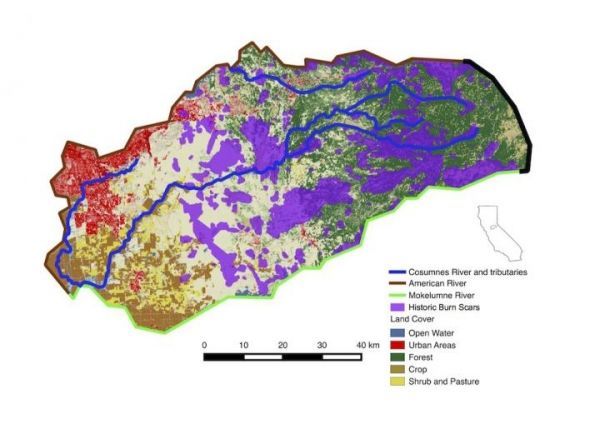In recent years, wildfires in the western United States have occurred with increasing frequency and scale. Climate change scenarios in California predict prolonged periods of drought with potential for conditions even more amenable to wildfires. The Sierra Nevada Mountains provide up to 70% of the state’s water resources, yet there is little known on how wildfires will impact water resources in the future.
A new study by scientists at Lawrence Berkeley National Laboratory (Berkeley Lab) uses a numerical model of an important watershed in California to shed light on how wildfires can affect large-scale hydrological processes, such as stream flow, groundwater levels, and snowpack and snowmelt. The team found that post-wildfire conditions resulted in greater winter snowpack and subsequently greater summer runoff as well as increased groundwater storage.
The study, “Watershed Dynamics Following Wildfires: Nonlinear Feedbacks and Implications on Hydrologic Responses,” was published recently in the journal, Hydrological Processes.
Read more at: Berkeley Lab
RBerkeley Lab researchers built a numerical model of the Cosumnes River watershed, extending from the Sierra Nevada mountains to the Central Valley, to study post-wildfire changes to the hydrologic cycle. (Photo Credit: Berkeley Lab)


